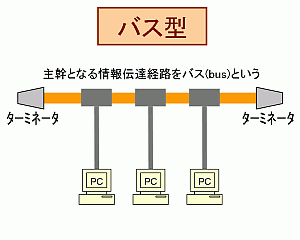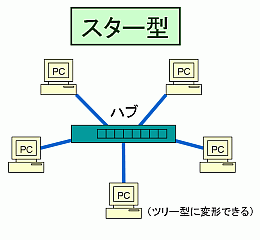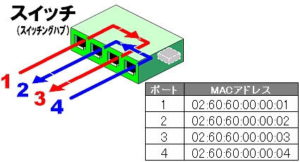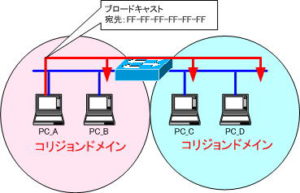Types of network topologies
Types of network topologies
Network topology is a concept that expresses network connectivity.
Typical forms include:
- bus type
- star type
- ring type
They are so named for their appearance (physical). There are also several other forms.
bus topology
A topology that connects multiple nodes with a single medium is called a bust topology. This form is used in networks constructed with 10BASE-2 and 10BASE-5 coaxial cables.
Connect terminals to one cable, and attach terminators to both ends of the cable. This terminator uses a terminating resistor to prevent the signal from reflecting off the end of the cable and becoming noise.
Since a single cable is shared, a cable break will cause a failure of the entire network. The higher the number of nodes, the higher the chance of collisions. This is a topology that is rarely used today.

star topology
A form in which multiple nodes are connected in the form of spokes via a hub or other central communication device is called a star topology. It is currently the mainstream because cable routing is easier and more flexible than other topologies. The morphology can also be configured as a tree.
Cable breaks can be localized rather than disrupting the entire network. 10BASE-T, 100BASE-TX, 1000BASE-T, etc. take this connection form. Wire with a twisted pair cable.

ring topology
A form in which multiple nodes are connected in a ring is called a ring topology. Token Ring and FDDI use this form.
Inside the ring, a signal called a token circulates at high speed. The node that wants to send catches this token, stuffs the data inside the token and sends it. Tokens circulate on a ring-shaped network, so collisions do not occur. A cable failure can cause damage throughout the network.



